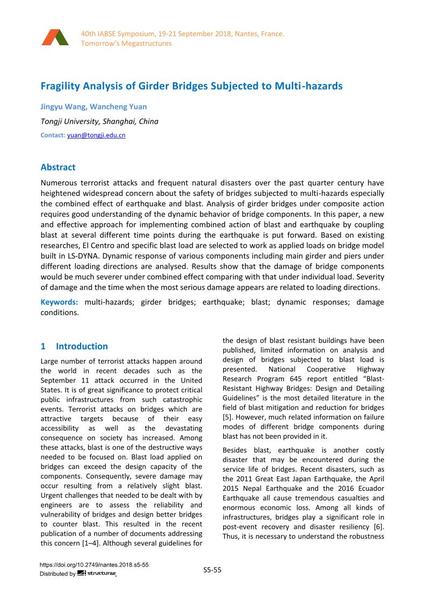Fragility Analysis of Girder Bridges Subjected to Multi-hazards

|
|
|||||||||||
Détails bibliographiques
| Auteur(s): |
Jingyu Wang
Wancheng Yuan (Abstract) |
||||
|---|---|---|---|---|---|
| Médium: | papier de conférence | ||||
| Langue(s): | anglais | ||||
| Conférence: | IABSE Symposium: Tomorrow’s Megastructures, Nantes, France, 19-21 September 2018 | ||||
| Publié dans: | IABSE Symposium Nantes 2018 | ||||
|
|||||
| Page(s): | S5-55 | ||||
| Nombre total de pages (du PDF): | 8 | ||||
| DOI: | 10.2749/nantes.2018.s5-55 | ||||
| Abstrait: |
Numerous terrorist attacks and frequent natural disasters over the past quarter century have heightened widespread concern about the safety of bridges subjected to multi-hazards especially the combined effect of earthquake and blast. Analysis of girder bridges under composite action requires good understanding of the dynamic behavior of bridge components. In this paper, a new and effective approach for implementing combined action of blast and earthquake by coupling blast at several different time points during the earthquake is put forward. Based on existing researches, El Centro and specific blast load are selected to work as applied loads on bridge model built in LS-DYNA. Dynamic response of various components including main girder and piers under different loading directions are analysed. Results show that the damage of bridge components would be much severer under combined effect comparing with that under individual load. Severity of damage and the time when the most serious damage appears are related to loading directions. |
||||
| Mots-clé: |
tremblement de terre explosion
|
||||
